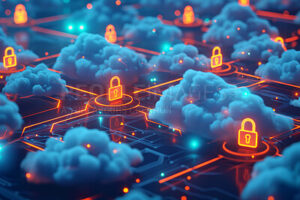Photo by seanlockephotography
My third blog post will talk about some topics that we learned in Module 3 in EDC 338. These include PLN spaces, privacy and ethics online, inclusivity and UDL in PLNs and diversity in digital learning.
PLN Spaces Through Social Media
A Personal Learning Network (PLN) is a network of connections that supports your personal and professional growth. Research shows PLNs give you instant peer feedback, exposure to diverse viewpoints, and “just‑in‑time” resources that traditional LMS forums rarely match (Edutopia, 2019). Having a specific PLN space allows me to stay up-to-date with new updates and information that I would otherwise miss without being on social media. I use several social media platforms to build up my PLN space that is tailored to my academic and career needs.
| Platform | How I use it | |
|---|---|---|
| X (Twitter) | Follow economists & recruiters, use specific hashtags to keep up with current news | |
| Professional updates, browsing job openings and contacting recruiters | ||
| r/PersonalFinance & r/UVic | ||
| TikTok | Curated FYP for academic and non-academic interests | |
| Discord | UVic course servers |
Privacy, Ethics, and Security in Digital Spaces

Photo by Allistair
Privacy, ethics and security are interconnected concepts that allow us to utilize the potential that social media holds while also staying safe and respectful online. I always keep my accounts on social media sites like Instagram and Snapchat on private. For digital spaces like Reddit and X, I use an alias username. I ensure that I always have Two-Factor Authentification turned on so that none of my accounts get hacked. I also make sure to not share any private information online on any accounts like my address or banking details. I ensure that I have my location turned off at all times. For responding to comments and sharing my opinions online, I double check to prevent the usage of any ignorant language and words that might upset other users. I These practices follow Aliakbari, Barzan, and Maadikhah’s (2025) finding that transparent policies and privacy‑enhancing technologies—when paired with respectful user behavior—are critical for building secure, trustworthy learning spaces where people feel safe to participate and share ideas.
Inclusivity and UDL in PLNs
Challenges and Importance of Diversity in Digital Learning
Diversity in digital learning matters because it widens the intellectual lens. When courses bring in different cultures, languages, and ways of doing things, students see new ways to solve problems, question their own biases, and feel like they really belong. Diversity in digital learning can be promoted by designing content that offers multiple formats—text, audio, and video—so learners with different abilities and preferences can access material equitably.
Asif Sadiq’s TEDx talk, Diversity, Equity & Inclusion: Learning How to Get It Right, really hits home that being inclusive isn’t just about ticking boxes – it’s about really listening to those who aren’t always heard and knocking down the barriers in their way.
To ensure diversity in my PLN, I try to follow a new and niche creator or educator every week to make sure all opinions are absorbed. I also try to be friends with people from different walks of life to see the world in their perspective as well.
References
Edutopia. (2019, April 2). Using social media to build a personal learning network. https://www.edutopia.org/article/using-social-media-build-personal-learning-network
Aliakbari, M., Barzan, P., & Maadikhah, M. M. (2025). Privacy issues in online learning: A review of literature and suggestions for further research. Language, Identity and the Digital Realm, 1(1), 1–17. https://doi.org/10.22034/lidr.2025.722877
CAST. (2025). The UDL guidelines (Version 3.0). Center for Applied Special Technology. https://udlguidelines.cast.org/
